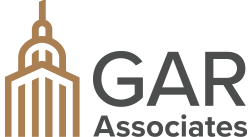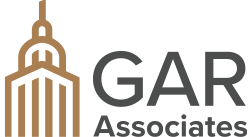LAKE PLACID — This year’s tentative property assessment roll is now complete in the town of North Elba and village of Lake Placid, and rolls show that property values in local residential areas have risen by 11% in the last year.
The town sent out notices of change in assessment during the last week in April, according to Assessor’s Aide Deb Mueller, putting new assessments in most property owners’ hands by the beginning of this month. People can view the tentative assessment rolls online at https://co.essex.ny.us/2022TentativeRolls.asp.
Town Assessor Todd Anthony said this year’s increase in assessment values was an abnormal jump compared to recent years. For example, in 2021, residential property assessment values rose 6%. Mueller said the pandemic-related real estate boom is the main factor in the more significant increase this year.
The higher-than-usual increase isn’t isolated to Lake Placid — some other residential areas in Essex County, like ones in Keene, Wilmington and Jay, saw a residential property value increase of 11% or more, according to Mueller. Anthony expects the rising trend to drop off eventually, but he said it’s hard to pinpoint when that might be.
Anthony said he’s heard from residents who are concerned that their taxes will rise along with their property assessment values. While that could be the case, according to the state Department of Taxation and Finance, your assessment could also increase while your taxes decrease or stay the same. Assessment values aren’t taxes — taxes are based on assessment values.
–
How is property assessed?
–
Anthony said he assesses property by performing a cost analysis — evaluating what it would cost to buy a parcel of land and prepare it to build a house on it. If there’s a building or home on the property, Anthony said he depreciates the value of the property based on the age of the building, taking into account whether or not the building has been rehabilitated and brought to a newer condition.
After running a cost analysis, Anthony said he performs a comparable sales analysis. He compares properties with a certain style and quality in a certain neighborhood to similar properties that have recently sold in similar areas. It’s easy to assess recently sold homes, Anthony said, because the market value of the home was just determined by the buyer.
Anthony said people have told him they feel singled out by their increased assessments. He said he tries to be fair by looking at all the parcels in town.
“I’m not picking on individuals,” Anthony said, “I’m looking at real estate and asking myself, ‘What would it sell for?’”
–
Level of assessment
–
The town’s level of assessment, or how property assessed value relates to the property’s market value, has remained at 100% of market value “for decades,” Anthony said. It’s important to assess properties at 100% of market value because it helps people better evaluate the accuracy and fairness of their assessments, according to the state Department of Taxation and Finance.
While this year wasn’t supposed to be a full valuation of assessments, Anthony said it ended up being a full reassessment because the real estate market has been so “hot.” He said so much has changed in the market that this year he wanted to assess properties with a “finer tooth comb” instead of “slapping on a percentage and calling it a day.”
Anthony said that if he hadn’t reassessed properties in the town and village this year, the level of assessment could drop from 100% of market value and the state would issue the municipalities an equalization rate to bring their assessments to full market value. If properties weren’t reassessed this year and assessments were only at 88% of their value, it could be harder for people to determine whether or not they’re being taxed fairly.
–
Assessments vs. taxes
–
The property taxes you pay start with the budgets adopted in your local school district, municipality and county by your school boards, town and village boards, and county legislature. When those boards adopt a budget, they determine how much they’ll collect in property taxes from local taxpayers — called a tax levy — for that fiscal year. How much boards can increase a tax levy from one year to the next is determined by a state issued tax cap, which is the percentage of allowable increase in taxes collected — usually around 2%.
The rate at which a person is taxed is determined by dividing a budget’s tax levy by that municipality or district’s total assessed property value. For example, the Lake Placid Central School District is proposing to levy $16,675,694 in taxes in the 2022-2023 school year. When that levy is divided into the total assessed property value of the district, you get a tax rate of $6.86 per $1,000 in assessed value. A taxpayer in the school district could calculate their property taxes by multiplying the tax rate by the total assessed value of their property.
Assessed property values move along with tax levies, Anthony said, so when assessed values and tax levies rise together, property taxes remain more stable. If Anthony hadn’t reassessed properties this year, he said, people’s taxes would have increased by the percent their school district, county and municipal tax levies increased from year to year — the tax cap adopted in those community’s budgets.
Anthony said that if your assessment increased this year by more than the average increase in taxable value for the town and village — which he said was 8.6% — you might see an increase in your taxes. You can determine if your assessment went up by more than 8.6% by finding the percentage of difference between your previous assessment and your new assessment. For instance, if your house was reassessed at $125,000 and your previous assessment was $100,000, your assessment increased by 20% and you might see an increase in taxes. If your assessment increased by a percentage equal to or below the town’s average increase, Anthony said, you might see no change or a decrease in your taxes, respectively.
–
Why the increase?
–
Anthony said that on average, residential property assessment increased by 11% this year; vacant land property values rose by 10%; and commercial values went up 3%. That’s across the town of North Elba and village of Lake Placid, which includes the hamlet of Ray Brook and parts of the village of Saranac Lake.
Anthony said he “wholeheartedly” believes that the pandemic-related real estate boom has contributed to rising assessment values. High real estate demand and low supply have caused market prices to skyrocket during the pandemic. While the number of closed sales are starting to decrease — an April report from the New York State Association of Realtors showed the sales have decreased by 7.1% in the last year — average sale prices are still on the rise by more than 17%, and homes for sale are staying on the market for fewer and fewer days. NYSAR’s report shows that in the last year, buyers have on average paid around .2% above 100% of market value.
“One has to understand that we’re operating in an active, moving real estate market,” Anthony said. “And I think it’s dead obvious that it’s an increasing market.”
Anthony added that pandemic-related inflation on construction materials and labor also contributed to the increased assessments.
Anthony said a “large portion” of new buyers have non-local zip codes. He said some of those people are buying second homes and “escape pads,” while some others are relocating here. Anthony said it’d be a “shot in the dark” to estimate the percentage of non-local buyers and how they’re using the properties.
Anthony also said some people come into the area specifically to buy properties for STR use. He said they find underappreciated parcels, purchase them, prepare them for renting and continue the pattern with other properties as an investment strategy. When a property is brought to a newer condition, its assessment value could rise.
For example, that could be the case with one STR conversion that’s before the Lake Placid-North Elba Review Board right now. A New York City-based property management company, Stay at Lina, wants to convert an old shed on Cascade Road into a two-story, eight-bedroom single-family home to use as an unhosted STR.
Anthony said that the increasing short-term vacation rental presence in the town and village isn’t to blame for increasing assessments, but he said it’s a factor. A single-family home used as an STR is still a single-family home and would be assessed that way, he added.
–
Contesting your assessment
–
Assessors are required to hold appointments to hear complaints and comments from people about their assessments, which Anthony is in the process of doing this week. Mueller said Anthony’s appointments are completely booked, though people who want to contest their assessment or who aren’t satisfied by their appointment with Anthony can grieve their assessments with the Board of Assessment Review. The board is expected to meet on Tuesday, May 24 from 1 to 4 p.m. and 6 to 9 p.m. at the North Elba Town Hall to hear assessment complaints. People who want to grieve their assessments before the board should make an appointment by calling the assessor’s office at 518-523-1975.
The Board of Assessment Review is made up of three people who hear people’s assessment concerns independent from the assessor. The board evaluates any evidence someone might provide showing that their property was assessed incorrectly, and the board makes a decision to either deny, grant or strike a compromise with the person’s request for a new assessment. If someone still isn’t happy with their assessment value after that, Anthony said, they would take their case to Small Claims Assessment Review.
Published by Adirondack Daily Enterprise




